The Aylesbury is a large meat breed of duck developed in the town of Aylesbury in Buckinghamshire, England in the 18th century. Their status is critical.
Aylesburies are all white with a pale pink bill, orange feet, and white skin.
You will often see ducks labeled as Aylesburies that have an orange bill. These are NOT true Aylesburies; they are either Pekins, crossbreds, or maybe a bad strain of Aylesbury that has foreign blood somewhere in its lineage.
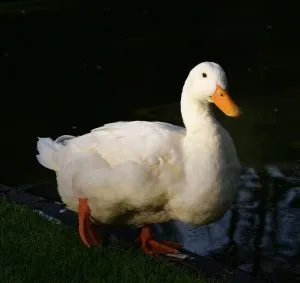
This duck was claimed to be an Aylesbury. It does have Aylesbury-like conformation, but look at the orange bill! This isn’t a purebred Aylesbury.
Of course, bill color doesn’t really make any difference (except for showing and breeding), but if you see a bird labeled as an Aylesbury that has an orange bill, it’s probably lacking other Aylesbury traits as well, and may be very different from the type of duck described here.
They are not active foragers, preferring to keep their heavy bodies close to home.
Neither do they fly. Their conformation and size is far from natural. Aylesburies generally have a deep keel. Exhibition birds often have such a deep keel that it touches the ground, which makes mating difficult, especially on land.
These ducks can easily become obese, so it is important to limit their food supply and encourage them to do some foraging.
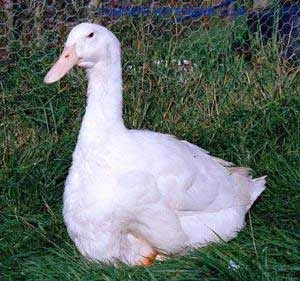
An Aylesbury with a very deep keel.
Aylesburies lay 35-120 white or greenish eggs a year. They’re docile and friendly.
Fertility levels will be much higher if these ducks have access to water. Utility birds are usually a little closer to natural and resemble Pekins.
They are one of the best duck breeds for meat production. They are grow fast and are very large, with drakes weighing about ten pounds (4.5 kg) and females weighing about nine pounds (4 kg).
Their white feathers also aid their reputation as a meat bird, because the appearance of dark pinfeathers on a carcass is unattractive. Their meat is also less fatty than that of the Pekin.
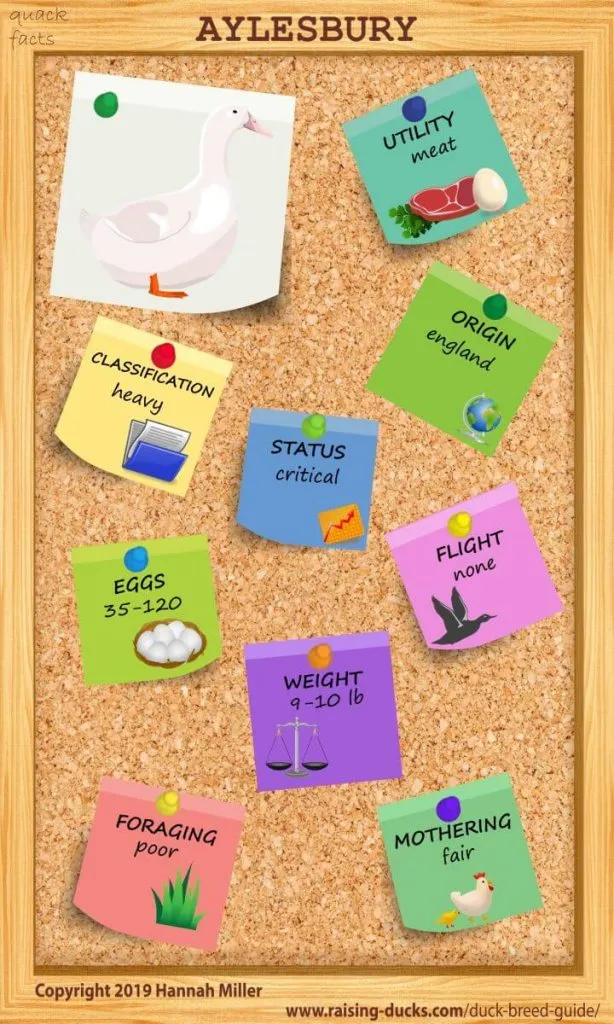
Picture and Video Gallery
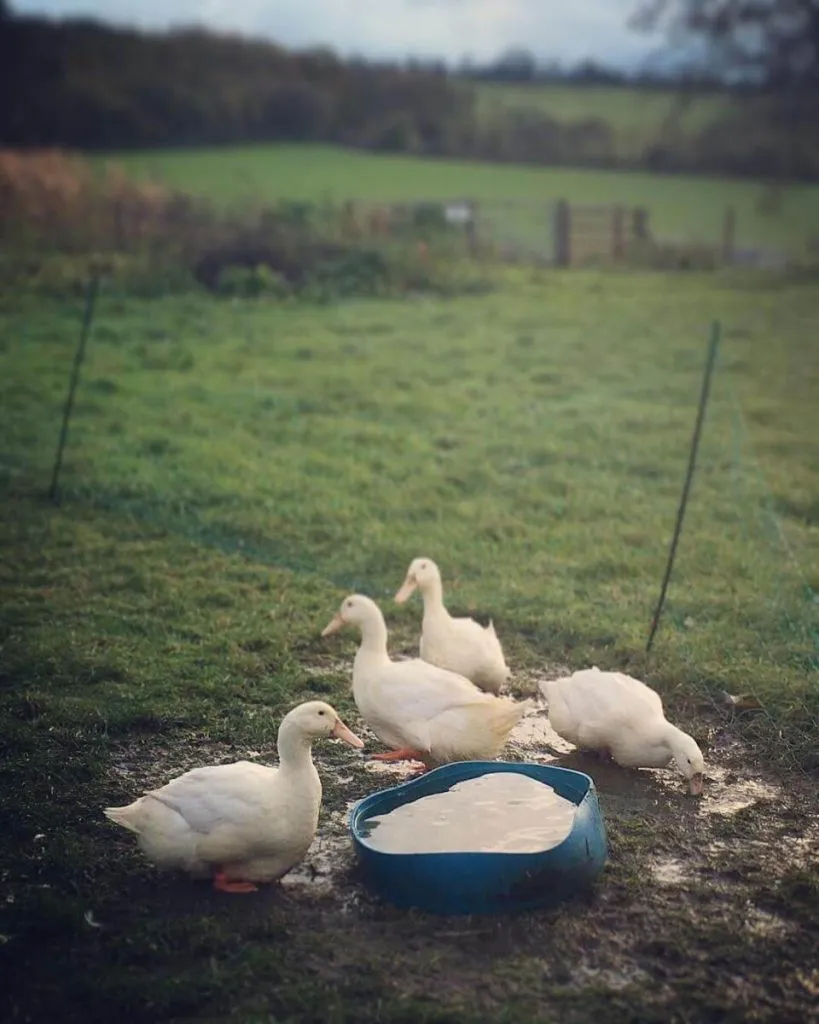
Four Aylesburies playing in a mud puddle. Photo courtesy of “inthefarmhouse” on Instagram (page no longer exists; not sure of new address).
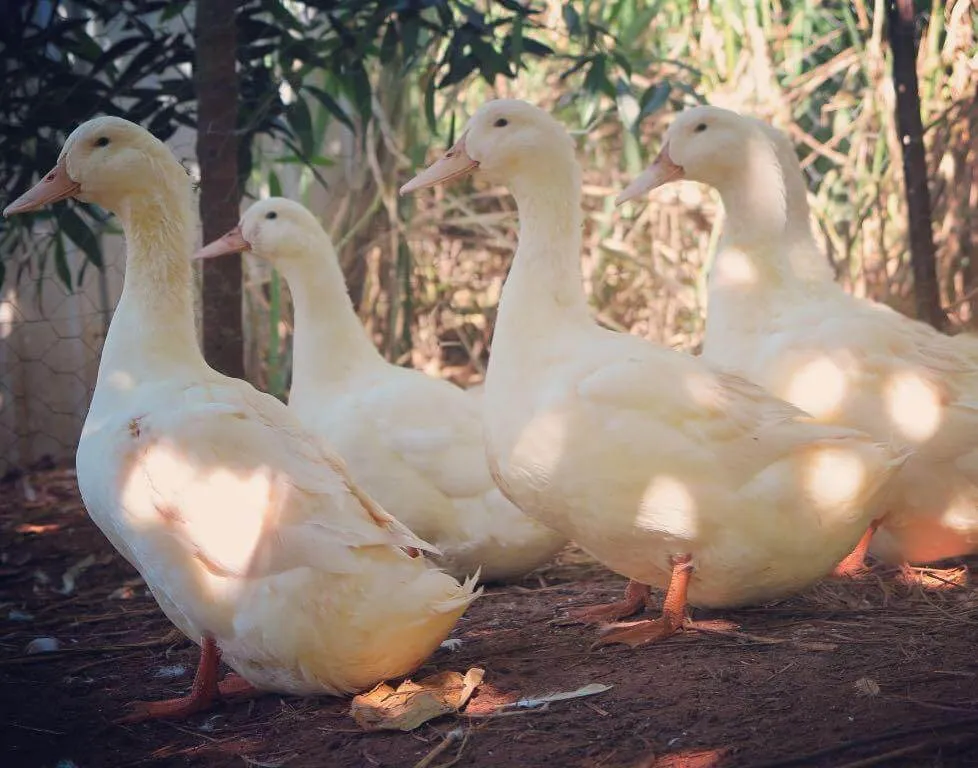
Aylesbury flock
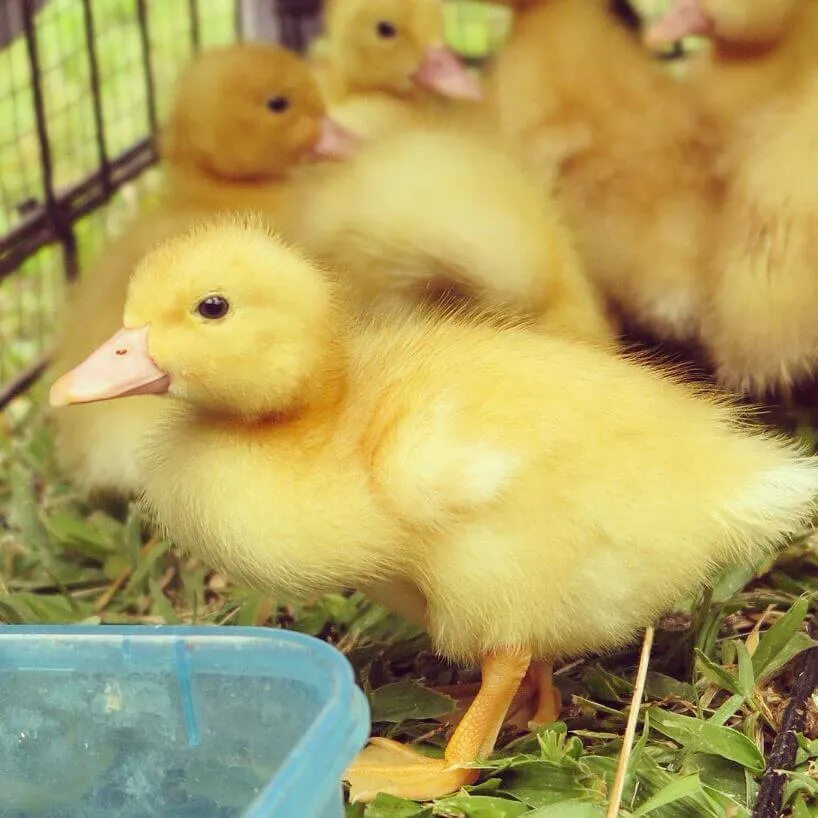
Aylesbury ducklings.
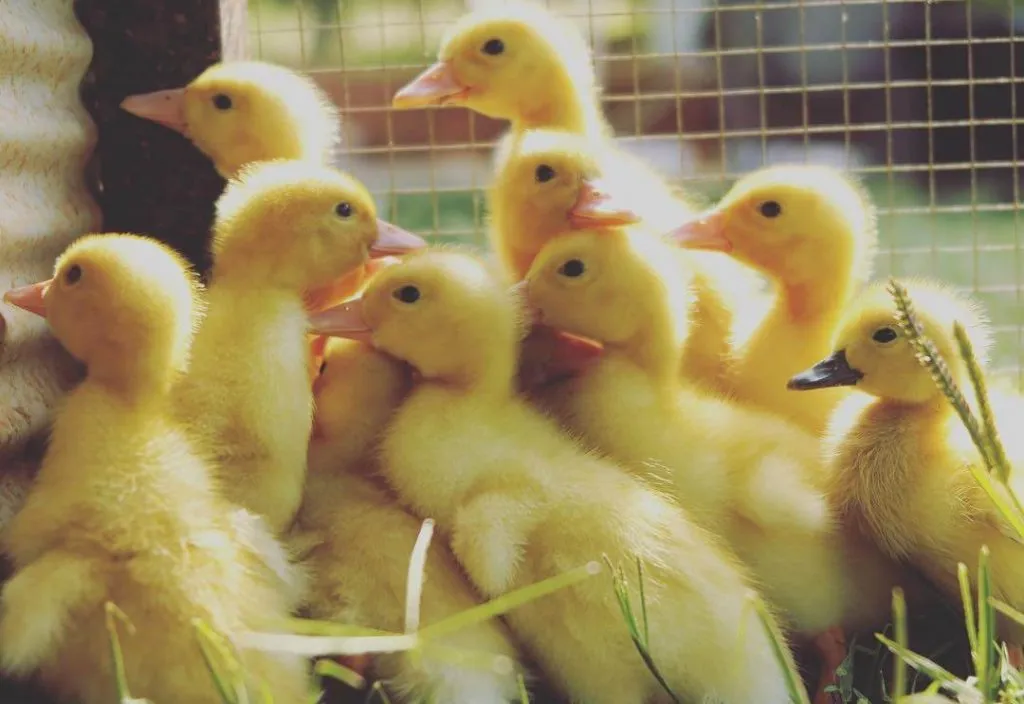
A cluster of cute Aylesbury ducklings.
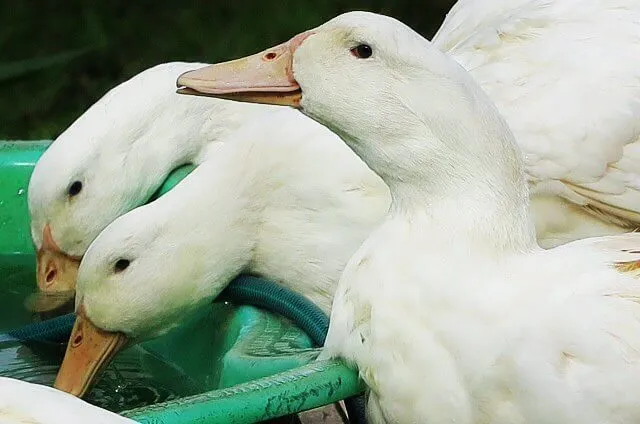
Three Aylesbury ducks.
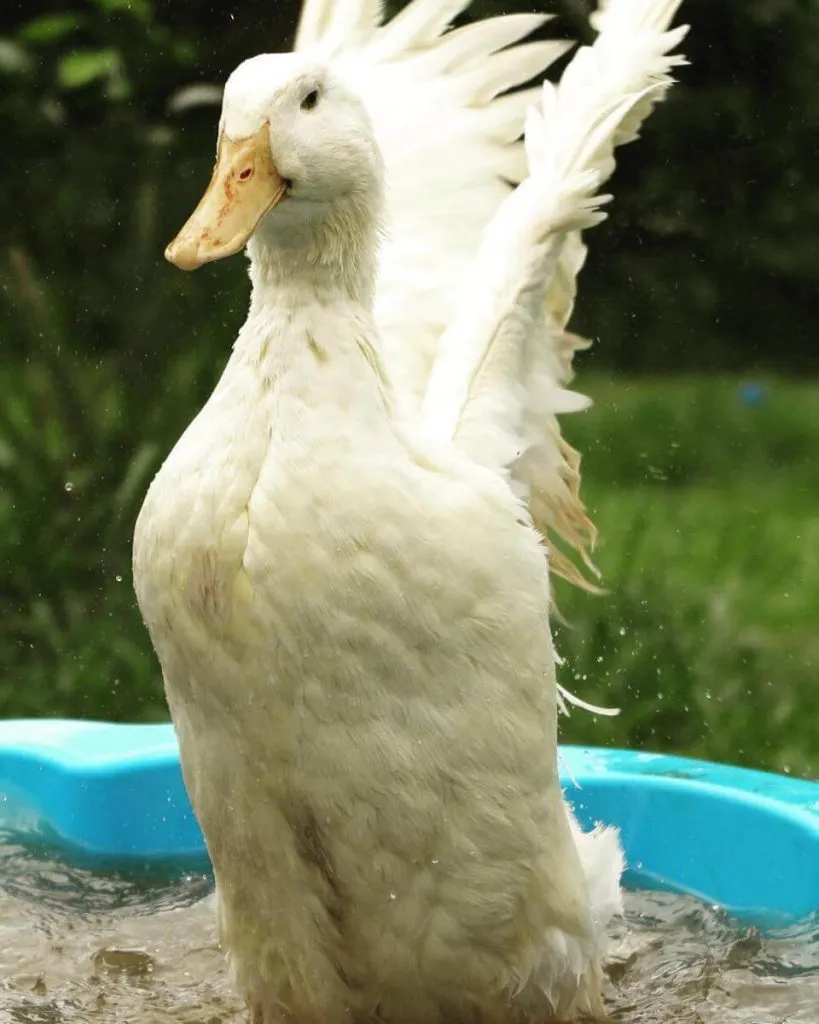
Aylesbury duck flapping its wings.
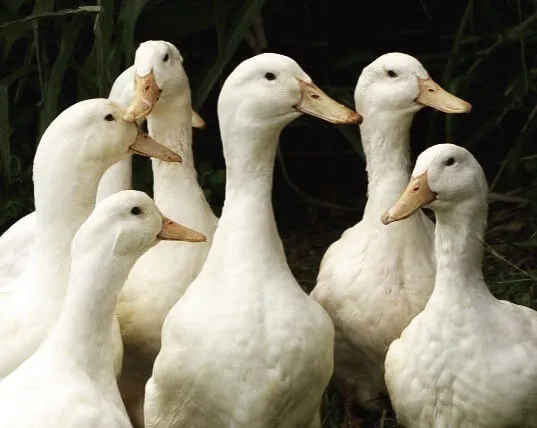
Aylesbury flock.
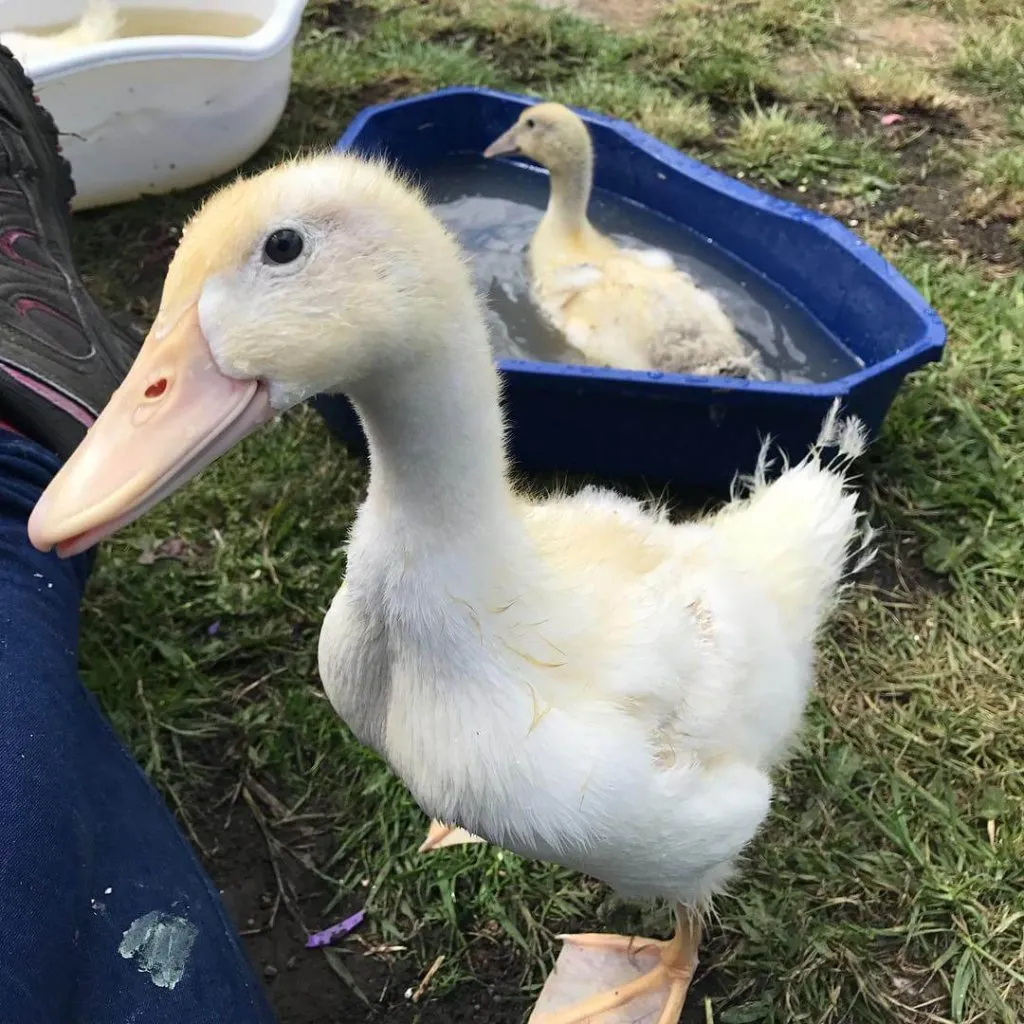
Juvenile Aylesbury.
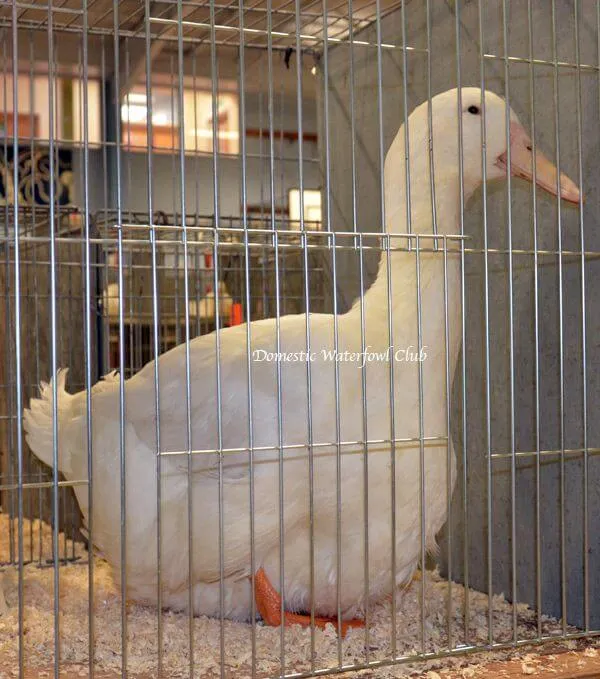
An Aylesbury at an exhibition. Image used with permission from the Domestic Waterfowl Club of Great Britain.
Leave a comment
Your email address will not be published.